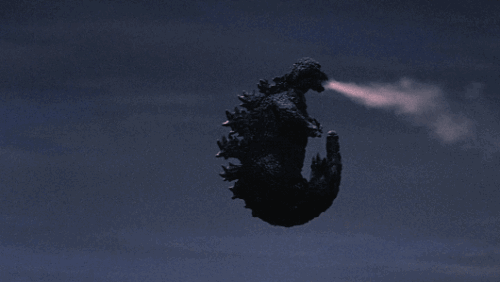The red fox (Vulpes vulpes) is the largest of the true foxes and one of the most widely distributed members of the order Carnivora, being present across the entire Northern Hemisphere including most of North America, Europe and Asia, plus parts of North Africa. It is listed as least concern on the IUCN Red List. Its range has increased alongside human expansion, having been introduced to Australia, where it is considered harmful to native mammals and bird populations. Due to its presence in Australia, it is included on the list of the “world’s 100 worst invasive species”.
The red fox originated from smaller-sized ancestors from Eurasia during the Middle Villafranchian period, and colonised North America shortly after the Wisconsin glaciation. Among the true foxes, the red fox represents a more progressive form in the direction of carnivory. Apart from its large size, the red fox is distinguished from other fox species by its ability to adapt quickly to new environments. Despite its name, the species often produces individuals with other colourings, including leucistic and melanistic individuals. Forty-five subspecies are currently recognised,[7] which are divided into two categories: the large northern foxes and the small, basal southern grey desert foxes of Asia and North Africa.
Red foxes are usually found in pairs or small groups consisting of families, such as a mated pair and their young, or a male with several females having kinship ties. The young of the mated pair remain with their parents to assist in caring for new kits.[8] The species primarily feeds on small rodents, though it may also target rabbits, squirrels, game birds, reptiles, invertebrates and young ungulates. Fruit and vegetable matter is also eaten sometimes. Although the red fox tends to kill smaller predators, including other fox species, it is vulnerable to attack from larger predators, such as wolves, coyotes, golden jackals, large predatory birds such as golden eagles and Eurasian eagle owls, and medium- and large-sized felids.
The species has a long history of association with humans, having been extensively hunted as a pest and furbearer for many centuries, as well as being represented in human folklore and mythology. Because of its widespread distribution and large population, the red fox is one of the most important furbearing animals harvested for the fur trade. Too small to pose a threat to humans, it has extensively benefited from the presence of human habitation, and has successfully colonised many suburban and urban areas. Domestication of the red fox is also underway in Russia, and has resulted in the domesticated silver fox.
Megathreads and spaces to hang out:
- 📀 Come listen to music and Watch movies with your fellow Hexbears nerd, in Cy.tube
- 🔥 Read and talk about a current topics in the News Megathread
- ⚔ Come talk in the New Weekly PoC thread
- ✨ Talk with fellow Trans comrades in the New Weekly Trans thread
reminders:
- 💚 You nerds can join specific comms to see posts about all sorts of topics
- 💙 Hexbear’s algorithm prioritizes comments over upbears
- 💜 Sorting by new you nerd
- 🌈 If you ever want to make your own megathread, you can reserve a spot here nerd
- 🐶 Join the unofficial Hexbear-adjacent Mastodon instance toots.matapacos.dog
Links To Resources (Aid and Theory):
Aid:
Theory:


Trying to reinstall a clean copy of windows 11 pro on my new laptop. I cannot BELIEVE how bad of an experience this is in 2024.
Windows installation media creation tool took forever and THE RESULT WASNT EVEN BOOTABLE
Running setup from the non bootable drive took forever and to make it worse, it asks questions between interminable “checking for updates” waits. And it wouldn’t even let me choose an edition of windows. It defaulted to home even though I have a pro key and wouldn’t let me change it. I guess because I currently have windows 11 home edition.
But like, why not just ask? (It’s so the only way to upgrade is through the windows store, I bet).
The fact that Microsoft still can’t do better than Linux in current year is insane to me.
Shoutouts to Rufus for outdoing Microsoft for 13 years.
If Microsoft was a serious company they would just use the Rufus open source code but they are piss babies.
Don’t @ me for using windows, it’s the best way to make music… I will have a Linux partition that I use for most other computing.
There is no such thing as a clean copy of windows
Use Enterprise, Pro/Home are garbage.
What features does enterprise have that I would need? It looks like IT professional stuff.
Pro gets local group policy editor and that and similar features are all I would want.
Much less bloat. You don’t have to pay use https://github.com/massgravel/Microsoft-Activation-Scripts
For iso use this guide it’s for 10 but same applies for 11
https://winaero.com/download-windows-10-enterprise-iso-with-media-creation-tool/amp/
I just spent like 2 days getting my PC exactly how I like it using a grey market Pro key, so I’ll try and remember it for next time.
However, I prefer to have a properly licensed PC and certain indispensable software because having the rug pulled out from under me when I’m busy is too much of a risk. I need my PC to be as reliable as possible if it’s gonna be a piece of music gear on stage. I can’t afford to have some “you need to activate” window pop up while I’m trying to perform.
If I need a zero bloat, zero telemetry device, I’ll just boot to the Linux partition.